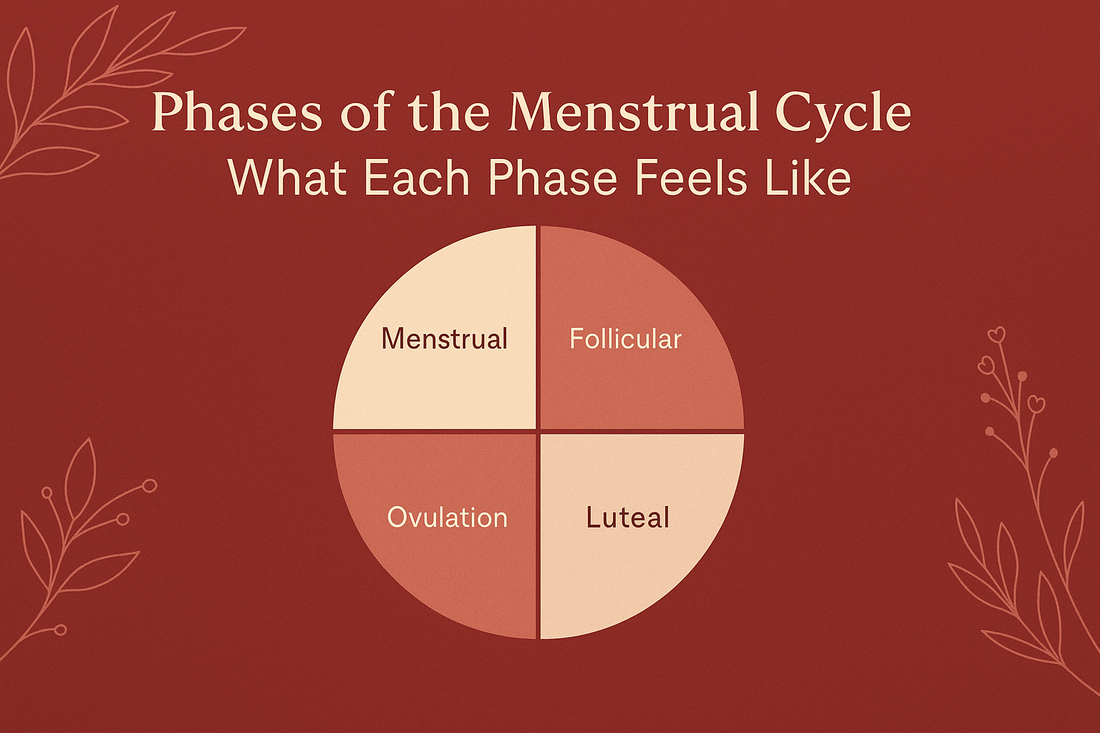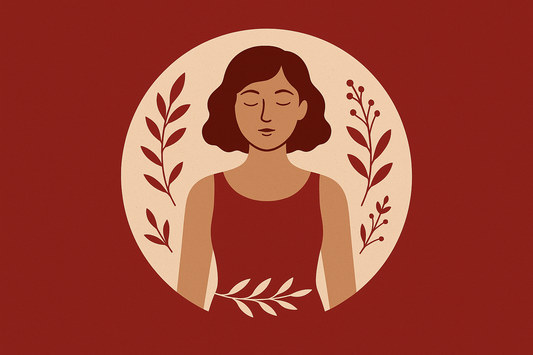Phases of the Menstrual Cycle

Phases of the Menstrual Cycle: What Each Phase Feels Like
The phases of the menstrual cycle are more than just biology—they’re your body’s rhythm. Each phase brings its own changes in energy, mood, and hormones. Understanding these shifts helps you work with your cycle instead of fighting it.
At SheCycles, we believe knowledge is power. Let’s explore the 4 phases of the menstrual cycle and how you can better connect to yourself through each stage.
What Are the 4 Stages of the Menstrual Cycle?
The menstrual cycle is divided into four phases in order:
- Menstrual Phase → bleeding, low hormones.
- Follicular Phase → rising estrogen, new beginnings.
- Ovulation Phase → egg release, hormone surge.
- Luteal Phase → progesterone dominance, PMS, and pre-period changes.
These stages usually repeat every 21–35 days, with 28 days being the average.
Phases in Order & How Long They Last
- Menstrual Phase: ~3–7 days. Hormones are at their lowest, and energy often drops.
- Follicular Phase: ~7–14 days. Estrogen rises, and the uterine lining begins rebuilding.
- Ovulation: A brief 1–2 days when the egg is released. Confidence and libido often peak.
- Luteal Phase: ~10–14 days. Progesterone rises, and PMS symptoms may appear before your next bleed.
Everyone’s cycle is unique—yours might be shorter, longer, or shift depending on stress, health, or age.

How Do You Feel During Each Phase?
Your moods and energy change with hormones across the cycle:
- Menstrual Phase: Low energy, possible cramps, need for rest.
- Follicular Phase: Rising energy, optimism, creativity.
- Ovulation Phase: Confidence, high energy, magnetic mood.
- Luteal Phase: Irritability, fatigue, sensitivity—classic PMS emotions.
This is why many women ask: “How do you feel at different phases of the menstrual cycle?” The answer is written in your hormones.
Luteal Phase Emotions & What to Avoid
The luteal phase is often the most emotionally intense:
- Emotions: irritability, sadness, fatigue, cravings.
- What to avoid: high stress, too much caffeine or sugar, overexertion, and self-criticism.
Instead, focus on self-care: gentle workouts, journaling, herbal teas, and restful sleep. Listening to your body makes this phase much easier to navigate.
How Do You Tell What Phase of Your Cycle You’re In?
Some cues that reveal your current phase:
- Menstrual: bleeding, fatigue, cramps.
- Follicular: lighter mood, rising energy.
- Ovulation: clear stretchy discharge, possible boost in confidence and libido.
- Luteal: PMS signs like bloating, mood changes, breast tenderness.
Tracking apps or a simple journal can make these patterns clear over time.
When to Check With a Doctor
Mild mood and energy shifts are normal. But talk to a doctor if you experience:
- Extreme mood swings disrupting daily life
- Very irregular cycles or skipped periods
- Severe PMS symptoms that feel unmanageable
Your cycle should empower—not overwhelm—you.
Support for Every Phase
Each phase calls for care and comfort. That’s why we created our Period Shop —so you feel confident whether you’re resting, moving, or simply being.
💡 Because every stage of your cycle deserves comfort.

Conclusion
Now you know the phases of the menstrual cycle—their order, how long they last, and how your moods shift with each one. This awareness can help you feel prepared, supported, and kinder to yourself.
Understanding the 4 phases of menstrual cycle and moods means embracing your body’s rhythm, one phase at a time.



